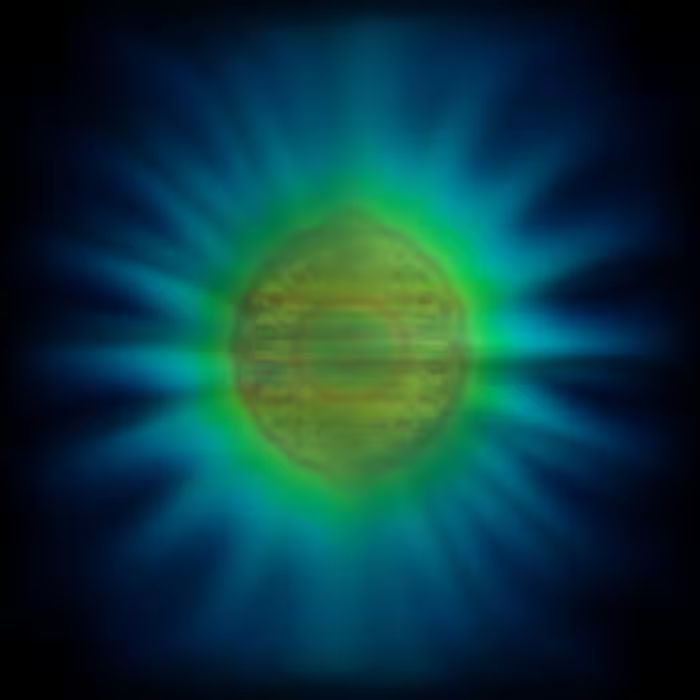Researchers at the University of Birmingham in the UK have visualised the precise shape of a single photon, revealing how it is influenced by its environment.
From University of Birmingham 28/11/24 (first released 19/11/24)

A new theory, that explains how light and matter interact at the quantum level has enabled researchers to define for the first time the precise shape of a single photon.
Research at the University of Birmingham, published in Physical Review Letters, explores the nature of photons (individual particles of light) in unprecedented detail to show how they are emitted by atoms or molecules and shaped by their environment.
The nature of this interaction leads to infinite possibilities for light to exist and propagate, or travel, through its surrounding environment.
This limitless possibility, however, makes the interactions exceptionally hard to model, and is a challenge that quantum physicists have been working to address for several decades.
By grouping these possibilities into distinct sets, the Birmingham team were able to produce a model that describes not only the interactions between the photon and the emitter, but also how the energy from that interaction travels into the distant ‘far field’.
At the same time, they were able to use their calculations to produce a visualisation of the photon itself.
First author Dr Benjamin Yuen, in the University’s School of Physics, explained:
“Our calculations enabled us to convert a seemingly insolvable problem into something that can be computed.”
“And, almost as a bi-product of the model, we were able to produce this image of a photon, something that hasn’t been seen before in physics.”
The work is important because it opens up new avenues of research for quantum physicists and material science.
By being able to precisely define how a photon interacts with matter and with other elements of its environment, scientists can design new nanophotonic technologies that could change the way we communicate securely, detect pathogens, or control chemical reactions at a molecular level for example.
Co-author, Professor Angela Demetriadou, also at the University of Birmingham, said:
“The geometry and optical properties of the environment has profound consequences for how photons are emitted, including defining the photons shape, colour, and even how likely it is to exist.”
Dr Benjamin Yuen, added:
“This work helps us to increase our understanding of the energy exchange between light and matter, and secondly to better understand how light radiates into its nearby and distant surroundings.”
“Lots of this information had previously been thought of as just ‘noise’ – but there’s so much information within it that we can now make sense of, and make use of.”
“By understanding this, we set the foundations to be able to engineer light-matter interactions for future applications, such as better sensors, improved photovoltaic energy cells, or quantum computing.”
More info
You may also be curious about:
-

Oxford physicists recreate extreme quantum vacuum effects in simulation
-

Tiny device spins blood clots away
-

Skin bacteria help protect us from sunlight
-

New brain-reading video game reduces chronic nerve pain
-

Black tea and berries could contribute to healthier aging
-

Viral mouth-taping trend ‘sus’ says Canadian sleep expert
-

New sodium fuel cell could enable electric aviation
-

The most extreme solar storm hit Earth over 14,000 years ago, scientists identify
-

Electronic face tattoo gauges mental strain
-

Solitonic superfluorescence paves way for ambient temp quantum computing
-

Cosmic mystery deepens as astronomers find object flashing in both radio waves and X-rays
-

The rotors are also the wheels on this morphobot
